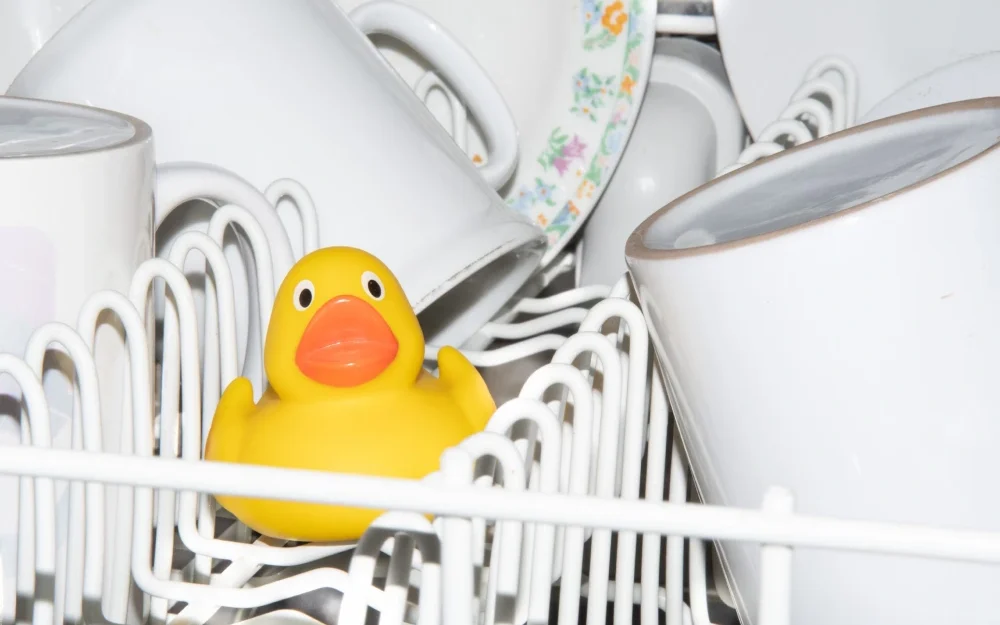Home Improvement Living in Texas
How Many Solar Panels Do You Need in Texas?
4 minute readHow to calculate the number of solar panels you need to power your Texas home
Home > BKV Energy Blog > All Posts > How Much Electricity Does Your Dishwasher Use?
5 minute read • Last update October 2024

Washing dishes is a constant chore in every household, often accompanied by the debate over whose turn it is! No matter who ends up handling kitchen duties, considering the water usage and energy consumption involved in clearing the pile is worthwhile.
Homeowners often ask themselves:
In this quick guide, we’ll cover everything you need to know about dishwasher energy usage so you can make more informed decisions about how to maintain an efficient kitchen.
Do dishwashers use a lot of electricity? Yes, they can. The average dishwasher consumes between 1,200 and 2,400 watts (1.2 to 2.4 kWh) per load, which is quite a lot compared to many other appliances. For example, 20 hours of TV electricity usage usually adds up to around 2,000 watts.
However, washing dishes by hand also uses energy because electricity is required to heat the water. The exact energy cost will depend on how many gallons of water your dishwasher uses per cycle and the energy needed to heat it. But to give you a ballpark idea, the average electric water heater uses 4,000 watts—significantly more than a dishwasher.
Understanding how much electricity a dishwasher uses gives us a good foundation, but to truly optimize energy consumption and reduce costs, it’s important to consider several key factors that influence a dishwasher’s energy use.
As a general rule, more dishwasher watts mean more electricity usage, leading to a higher utility bill. However, the precise cost to run a dishwasher will vary depending on the type, size, and condition of your appliance and how frequently you need to run a full load. Here are a few essential considerations:
By considering these factors, you can make more informed decisions to optimize usage and save energy, water, and money.
Wondering how dishwashers stack up against hand washing? Many homeowners are surprised to learn that modern dishwashers are more efficient! Let’s take a look at why that’s the case.
Dishwashers save water. But precisely how much water does a dishwasher use? An Energy-Star-rated dishwasher uses about 3.5 gallons of water per cycle, whereas it would take around 27 gallons to handwash the same number of plates in the sink.
The water heating process is the most energy-intensive stage in terms of dishwasher power usage. However, given the large amount required, it is still more economical than using a water heater to generate enough hot water for hand washing.
Now let’s explore how the energy and water savings from dishwashers can affect your utility expenses. It’s estimated that dishwasher use accounts for a small fraction of your bill. Considering the average electricity bill in Texas, that works out to $84-$110 a year depending on specific models and settings.
A typical dishwasher cycle can last from 1 to 4 hours, with energy consumption varying depending on the phase of the cycle. Here’s a breakdown of average power usage:
Energy usage per wash cycle will vary based on the specific dishwasher model, settings chosen, and local energy rates.
Ever wondered which dishwasher cycle is best for your needs? Here’s a list of the most common types of dishwasher cycles, when to use them, their duration, and the energy each requires.
Understanding the water consumption and energy demand of each cycle type can help you use your dishwasher more effectively, reducing your utility bills and ensuring your dishes come out sparkling clean.
Whether you’re looking for ways to conserve water, save money by lowering your electricity bill, or simply reduce your environmental impact, these handy tips for improved dishwasher efficiency can help:
You may also want to consider upgrading your current dishwasher. When it’s time for a replacement, be sure to choose an energy-efficient dishwasher. Buying an ENERGY STAR-rated dishwasher is recommended. Washers with an ENERGY-STAR label meet strict Environmental Protection Agency (EPA) guidelines and could save you 5,800 gallons of water over the long term.
Maximizing the efficiency of your dishwasher can significantly reduce your utility bills, contributing to a more sustainable home.
At BKVE, we understand the importance of keeping energy costs low while providing fair prices, simple plans, and transparent communication. We offer affordable electricity plans tailored to meet your needs, with clear communication—and no mind-boggling contracts, guaranteed!
Don’t wait! Enroll today and start saving with BKVE.
Graham Lumley, Digital Marketing Manager at BKV Energy, leads digital and traditional marketing strategies, focusing on educating Texans about the state's deregulated energy market. With over 8 years of marketing experience, he creates content to help consumers understand and save on their energy bills, bringing a fresh and dynamic approach to the industry.

Home Improvement Living in Texas
How to calculate the number of solar panels you need to power your Texas home

Gardening in Texas presents unique challenges. Long, hot summers and frequent droughts mean that traditional landscaping often requires significant water
Get $50 off your electric bill!
Use code BKVEJOINUS50
Enter your zip code to shop BKV Energy's affordable, fixed-rate Texas electricity plans. Use the promo code for $50 off your electric bill.